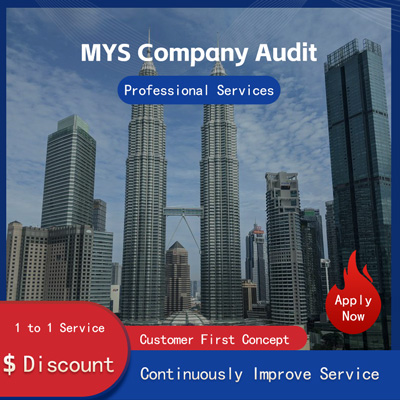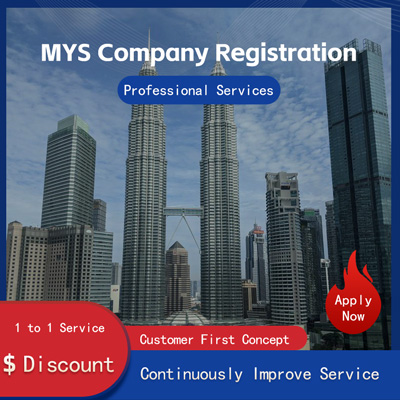
U.S. Corp Dissolution Revival Process Explained A Guide for Smooth Operations
Translation
In today's globalized business environment, U.S. companies-being a significant vehicle for international operations-are closely watched in terms of their formation, operation, and processes for dissolution and reinstatement. For some entrepreneurs, with changes in market conditions or strategic adjustments, dissolving unnecessary entities or restoring previously dissolved corporations has become a common need. Based on recent updates and practical experience, this article provides a detailed guide on how to properly dissolve and reinstate a U.S. company.

1. Why Dissolve or Reinstate a U.S. Company?
In recent years, with fluctuations in U.S.-China trade relations and the global impact of the pandemic, many small and medium-sized enterprises registered in the U.S. have faced operational pressures. According to a 2025 Bloomberg report, more than 12,000 foreign-owned small businesses applied for dissolution in California alone, with a significant portion owned by Chinese entrepreneurs. Reasons for dissolution typically include prolonged inactivity, high compliance costs, and strategic relocation.
Conversely, some businesses prematurely dissolved their entities due to miscalculations about market conditions and later sought to reactivate their original corporate structures. Understanding how to legally and efficiently complete these processes is crucial for business owners.
2. Detailed Guide to U.S. Company Dissolution
Dissolution is a formal legal process that ends a corporation’s legal existence. While specific requirements vary by state, the general steps are as follows
1. Internal Decision-Making
First, a board or shareholder meeting must be held to pass a resolution to dissolve the company, which should be documented in writing. Typically, a majority shareholder vote is required, per the company's bylaws.
2. Settle Debts and Tax Obligations
Before filing for dissolution, all outstanding taxes, employee wages, and vendor bills must be settled. Final tax returns must be submitted to both the IRS and the state tax authority, along with obtaining proof of tax clearance.
3. File Dissolution Documents
Each state has its own dissolution forms. For example, Delaware requires a Certificate of Dissolution, while California uses Articles of Dissolution. These documents usually include the company name, registration number, effective dissolution date, and require a signature from an authorized representative.
4. Notify Creditors and Partners
Although not mandatory, it is advisable to notify major creditors, clients, and suppliers in writing to prevent future disputes.
5. Pay Fees and Await Approval
Filing fees vary by state-for example, approximately $300 in California and $200 in Delaware. Once approved by the Secretary of State, the company will be officially removed from the registry.
3. Post-Dissolution Considerations
Dissolution does not automatically eliminate legal liabilities. If there are unresolved lawsuits or contractual obligations, the company or its former officers may still face legal action. Assets should be distributed appropriately, avoiding any illegal transfer of funds. If reactivation is anticipated, retaining full documentation-including original incorporation papers and tax records-is essential.
4. Detailed Guide to Company Reinstatement
If a business decides to revive its original corporate structure after dissolution, it can do so through the reinstatement process. Procedures vary by state but generally involve the following steps
1. Confirm Eligibility
Most states allow reinstatement within a certain time frame e.g., five years in California, provided the company was not formally revoked and has no serious violations on record.
2. Settle Outstanding Fees and Penalties
Many companies owe unpaid annual fees or taxes at the time of dissolution. These must be paid in full during reinstatement, along with any applicable late fees.
3. Submit Reinstatement Application
In California, applicants must file an Application for Reinstatement or Change in Status, accompanied by an explanatory letter. Some states may also require financial statements or attorney affidavits.
4. Reactivate Accounts and Licenses
Upon successful reinstatement, bank accounts, EINs Employer Identification Numbers, and business licenses must be reactivated. If the original bank account has been closed, a new one must be opened.
5. Update Registration Information
Any changes to the company address or director information must be updated with the state office.
5. Importance of Professional Assistance
Given the independent legal systems across U.S. states and the complexity of these procedures, seeking help from professional accountants or attorneys is highly recommended. Experts can assist with tax settlements, cross-border asset management, and risk mitigation. In August 2025, the Wall Street Journal reported a case where an entrepreneur was sued for failing to properly notify creditors during dissolution. This highlights the importance of compliance and the value of expert guidance.
6. Conclusion
Whether dissolving or reinstating a U.S. company, strict adherence to state laws and careful handling of financial and legal matters are essential. As cross-border business activity increases, more companies are focusing on lifecycle management. Understanding the correct dissolution and reinstatement procedures not only reduces risks but also offers greater flexibility for future strategic planning. In today’s uncertain global economy, the ability to adapt corporate structures quickly and effectively is becoming a key strategy for navigating business challenges.
Helpful (0)
No help (0)
Still have questions after reading? More than 98,000 users have contacted us. Please fill in the following information to obtain business information.

Service Scope
MoreRecommended for You
- The Real Deal Behind Registering a Company in Singapore Hidden Challenges Risks No One Tells You!
- How to Register a Foundation Company in Singapore Key Steps Things to Watch Out For!
- Audit Cost Insights for Singapore Companies Key Factors and Market Trends Explained
- How to Start a Company in Singapore as a Foreigner? A Comprehensive Guide to the Registration Process and Secrets!
- S’pore vs HK Banks Which Is Better for Wealth Management? Find Out the Smart Choice
- How to Easily Open a Singapore Bank Account in Mainland China? Ultimate Guide + Practical Tips
- What's It Really Like to Start a Biz in Singapore? Full Breakdown from Registration to Operations
- NRA Bank Confirmation Revealed Secrets You Must Know About Different Account Types
- How to Smoothly Open a Singapore Bank Account in China? A Guide to the Process and Key Points to Note
- U.S. Embassy in China Consular Section One-Stop Service, How to Process Notarization More Efficiently?
- How to Open a US Bank Account for a Hong Kong Company? Essential Requirements Explained!
- Want to Open an Account at Standard Chartered Bank in Beijing? Understand the Requirements in One Article!
- Which U.S. States Have the Craziest Economic Policies? One Chart Explains All!
- How to Get a WY Business License Must-Know Tips Before Starting Your Biz!
- Can You Find U.S. Company Registration Info in China? A Clear Guide!
- How Long Does It Take to Cancel a US Bank Card? Uncovering the Process and Truth Behind It
- How Much Does a Power of Attorney Cost in the US? You Might Not Know These Details
- Opening a Personal US Account Isn't That Hard - Just Follow These Steps and Tips
- How to Read U.S. Company Quarterly Reports A Comprehensive Guide to Fundamentals and Key Details
- U.S. Corp Account Opening Guide Secrets to Effortlessly Kickstart Global Biz


 ONE
ONE








Customer Reviews
Small *** Table
December 12, 2024The experience was very good. I was still struggling to compare it with other companies. I went to the site a few days ago and wanted to implement it as soon as possible. I didn't expect that everything exceeded my expectations. The company is very large, with several hundred square meters. The employees are also dedicated and responsible. There is also a wall of certificates. I placed an order on the spot. It turned out that I did not make a wrong choice. The company's service attitude is very good and professional. The person who contacted me explained various things in detail in advance. After placing the order, the follow-up was also very timely, and they took the initiative to report the progress to me. In short, I am very satisfied and recommend this company!
Lin *** e
December 18, 2024When I first consulted customer service, they recommended an agent to me. They were very professional and patient and provided excellent service. They answered my questions as they came in. This 2-to-1 service model is very thoughtful. I had a lot of questions that I didn’t understand, and it’s not easy to register a company in Hong Kong. Fortunately, I have you.
t *** 7
December 19, 2024I originally thought that they only did mainland business, but I didn’t expect that they had been doing Hong Kong business and were doing very well. After the on-site interview, I decided to ask them to arrange the registration of my Hong Kong company. They helped me complete it very quickly and provided all the necessary information. The efficiency was awesome. It turns out that professional things should be done by professionals.👍
b *** 5
December 16, 2024In order to register a company in Hong Kong, I compared many platforms and stores and finally chose this store. The merchant said that they have been operating offline for more than 10 years and are indeed an old team of corporate services. The efficiency is first-class, and the customer service is also very professional.